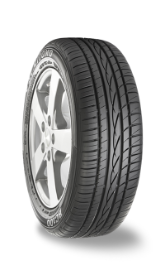Product details
The Sumitomo BC100 has been designed for safety and performance.
The asymmetric design of the Sumitomo BC100 helps to maximise contact with the road and offers high levels of directional stability, shorter braking distances and improved steering on dry roads.
The presence of wide grooves in the pattern helps to reduce the risk of aquaplaning, while the extra rigidity offered by the stiffened central rib offers great performance in wet conditions.
A silica-rich compound helps to provide excellent handling and directional stability along with improved wet and dry grip.
Product ID: 1000192506


